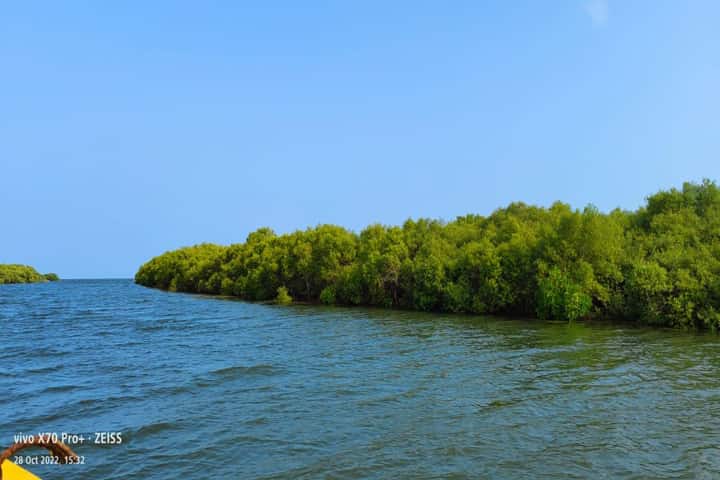

The forest officials of Gulf of Mannar Biosphere are trying their level best to restore the mangroves in that area, including Ramanathapuram (Pic. Courtesy Twitter/@Shiv_NMapp)
Mangrove forests are one of the most productive ecosystems in the world as they have rich and diverse living resources which support a large human population. Apart from this they protect coastal zones from erosion while providing food and shelter to several commercially valuable fish.
While this ecology is under serious threat for a long time, proactive steps are being taken to conserve them in India, especially Tamil Nadu.
On the occasion of International Mangrove Day today, Bakan Jagdish Sudhakar, Ramanathapuram Wildlife Warden told the media that this year they will take up plantation in 25 hectares and for this they have selected the dominant varieties like Avicennia Marina. For this purpose, seeds have been collected from the mainland as well as islands located off the Ramanathapuram coast. They will be planted after the monsoon when the soil salinisation level is lower.
The Gulf of Mannar Biosphere Reserve which includes Ramanathapuram, Tuticorin, Tirunelveli and Kanyakumari districts, has been taking steps to conserve the mangroves which are globally disappearing at an alarming rate of one to two per cent per year.
With the help of community participation, litter in these places which includes plastic bottles, polythene bags and other materials are being removed. To restore the degraded habitat plantation was undertaken in which people from all walks of life took active part. Talking to India Narrative, Sudhakar said: “Seventy ha or forest area of mangrove plantation were successfully developed in degraded areas from 2022 to 2023 while invasive species were removed from 185 ha of land. Besides, 2,48,000 native trees were also planted.”
Sharing details about mangroves with India Narrative, the Wildlife Warden said: “Mangroves are the salt tolerant plants and consist of coastal wetlands, swamps, forestlands within and water spread areas. They are woody halophytic plants, which exist in the conditions of high salinity; extreme tides, strong winds, high temperatures and muddy-anaerobic soils. Acting as a feeding and breeding ground for many organisms, this ecosystem is very complex and fragile and has a rich biodiversity of flora and fauna.”
Highlighting their importance, he added: “Mangrove ecosystems are indicators of coastal change or sea-level rise. They retain toxic metals and stop it from infiltrating into the marine ecosystems while its soil and water act as a pollution sink and as a major place of carbon sinks. Being rich in organic production through the decay of the various plant litter and other nutrients from coastal and terrestrial land systems, mangroves provide the suitable environment for various aquatic organisms.”
The Ministry of External Affairs (MEA) has taken note of the new guidelines issued by…
The Ministry of External Affairs on Thursday said India refused to sign the joint declaration…
The Ministry of External Affairs spokesperson Randhir Jaiswal said that India, so far have evacuated…
Axiom 4 mission aboard the SpaceX Dragon spacecraft successfully docked at the International Space Station…
In a significant moment for regional cinema and cultural dialogue, the premiere of 'Harmukh', the…
Union Home Minister Amit Shah on Thursday said that languages were not just a medium…